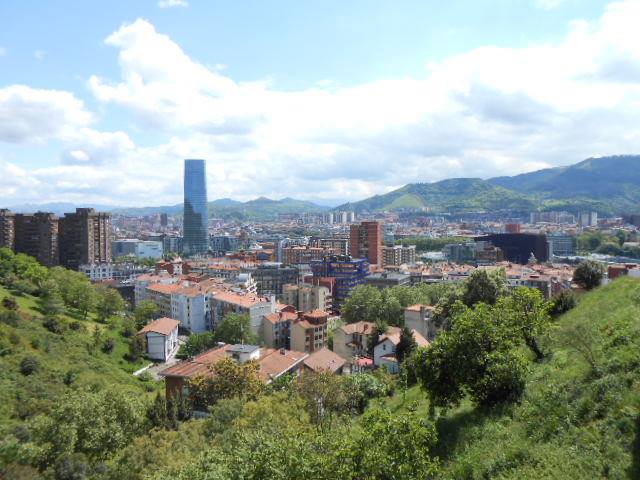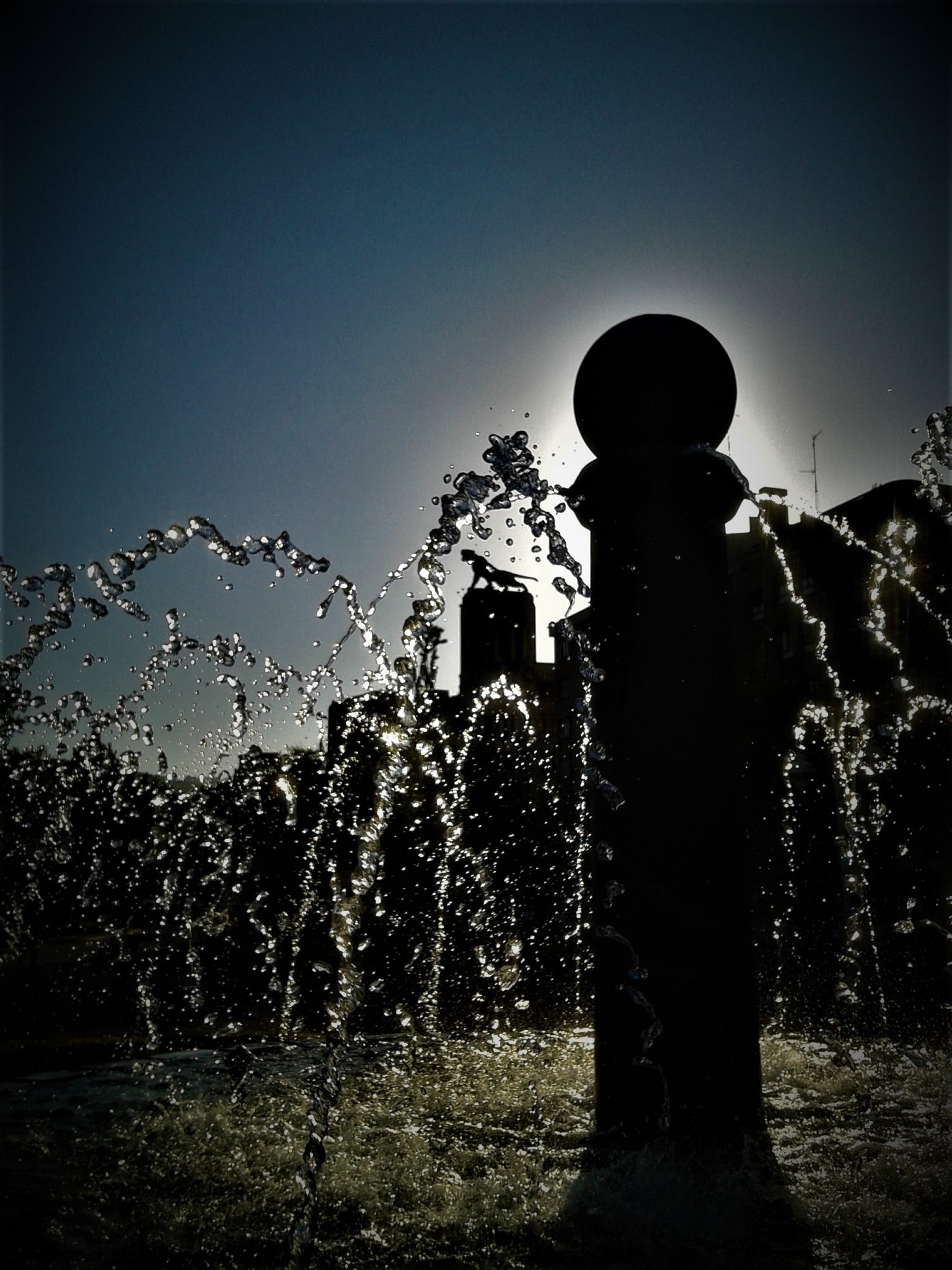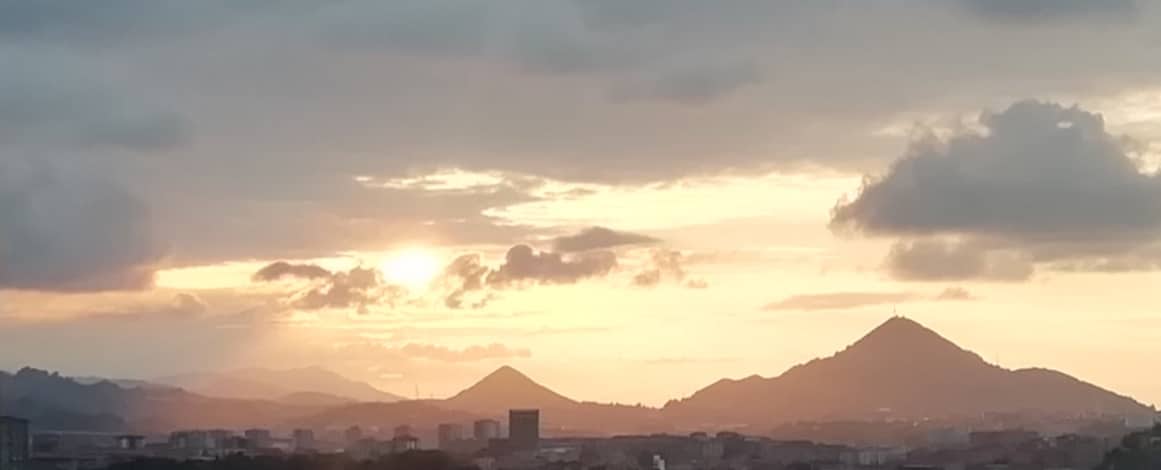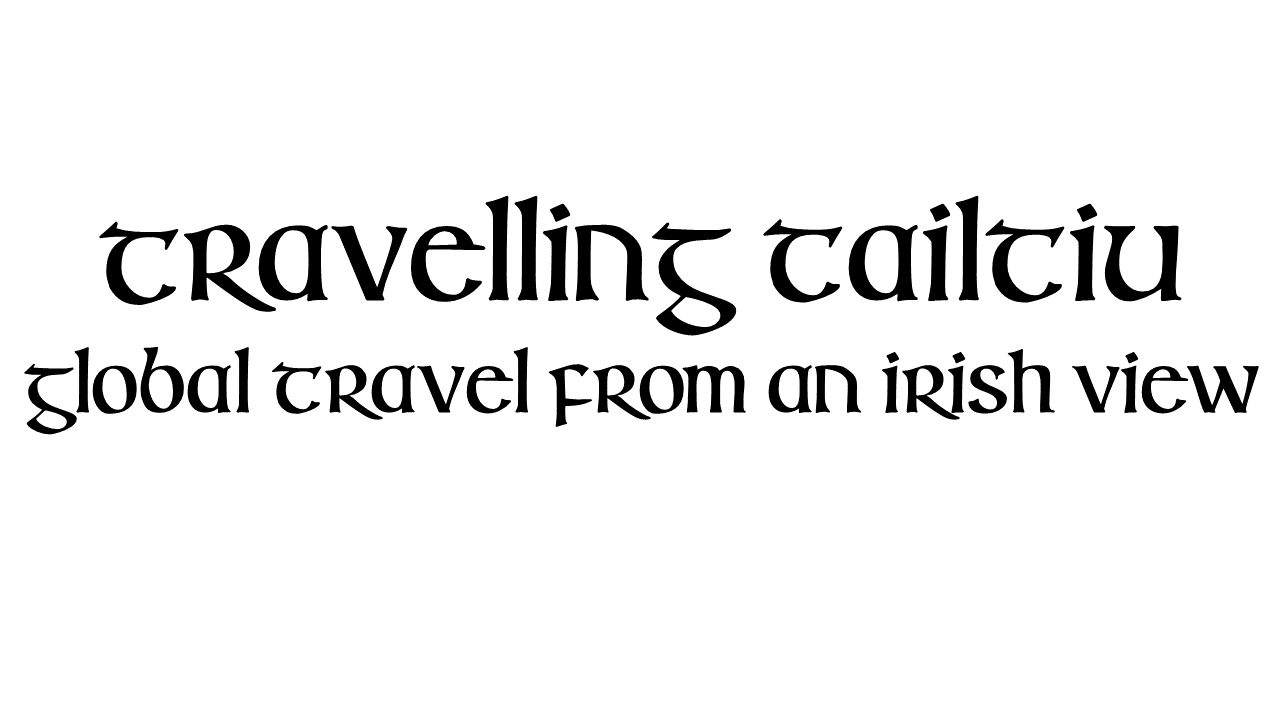Deustu-a once and future village?
Deusto is a popular neighbourhood in the Bilbao area, and here we suggest a few things to do there. We consider the history of the city as a series of villages which came together in the first part of the 20th Century as one entity. As we show the unique character of Deustu (spelt Deusto in Spanish), we have a look at the independent spirit and character of municipalities and areas across the Basque Country. We also consider the attitude to local governance as each area offers something unique.

A view of Bilbao from the lane coming down from Arangoiti to Plaza San Pedro de Deustu. There are many green areas close to the urban area at hand
Local identity
On the outskirts of Greater Bilbao at the end of the metro line lies a gorgeous seaside village called Plentzia. It's at the end of an enchanting river which empties into a small cove. This Cantabrian Sea resort features a surf school which teaches the young ones the basics of surfing and water safety. After getting the basics, they venture onto neighbouring beaches with rougher waves such as Sopelana. There is a nearby forest overlooking the sea and a short and scenic walk to a lighthouse. So it is well worth the visit. We will also have a more complete upcoming article on the place.

Deustuko Tigrea; the proletarian tiger roaring across at the more affluent Bilbao
Water skills are essentials of Basque life as the sea is an important entity here. There are also several world-championship surfing beaches along the Basque coast. It is a great source of free-time activities as the sea is easily accessible from urban neighbourhoods or inland villages. Those from the urban neighbourhoods frequent the seaside alongside the coastal dwellers and rurally-based inland Basques looking for water-based fun. Various types of watersports, paragliding and seafishing are available for the adventurous traveller and local folks looking for some craic.
Anyway, as an English-language teacher, I once did a placement test with a potential student from this scenic village. I asked the question of whether they liked going to the beach. The reply was, 'whenever I want to relax, I go to the beach at Gorliz, and whenever I want to surf, I go to Plentzia'. To any outsider who has visited the area, they will recognise Gorliz and Plentzia as being one single beach! There are indeed two municipalities sharing one built-up area. However, the idea of them being two completely separate places may seem strange to a visitor. The idea that there are two completely distinct beaches is especially a tad confusing.
Parochiality.
A similar mentality pervades many of the Basque localities, including Deustu. Deusto is very much in the urban area, but was once its own place. Many of the locals in the neighbourhood still refer to it as somewhere distinct from the city. Deustu is on the eastern bank of the Bilbao Estuary and seems like any other neighbourhood in the city. Previous to its 1925 annexation though, it had its own autonomy like the even more central Abando area. You might therefore hear some of the locals, the Deustuarrak, talking about going to Bilbao on a shopping trip for example. Not that Deusto has any shortage of retail outlets, mind you.
Historical positioning.
Historically, much of the transport between Deusto and Bilbao proper, namely the old town (Casco Viejo) and San Francisco areas, went along the river and a railway line connecting Bilbao to the coastal area of Getxo. You can read more about the Casco Viejo here. It is well-known for its historic tomato plantations and the Deustuarrak are nicknamed los Tomateros (the tomato growers), a source of local pride. One of Deustu's best-known landmarks is the tiger atop a riverside building which was originally a belt factory and now a residential block. This statue they say, symbolises the defiance of the neighbourhood. Deusto was historically an area of the industrial working-class, with the tiger roaring across the river at the more affluent areas.
The area.
The area is also known in Spanish as San Pedro de Deusto and it includes several other parts. Arangoiti is on the hill above the main barrio. The artificial island of Zorrotzaurre, which used to be a peninsula, until a few years ago, is down on the river. There are currently redevelopment projects going on there...slowly. Zorrotzaurre has its own unique alternative style and feel, with many of the post-industrial architecture repurposed as arts centres and markets. It also has a small but lively summer fiesta.
The civic and social heart.
Deustu's historical civic heart would have been San Pedro church, on the plaza, and dates back several centuries. The plaza is cut in two by a major traffic thoroughfare, a major complaint of locals. It has a historical handball alley, where the local variety of handball called Euskal Pilota is played. You will see a variety of other local games there too. International sports are popular too, with locals occasionally cracking out the old tennis raquets for a rally in the alley.
There are also a few bars behind the alley, making up part of a lively social area surrounding San Pedro Church. These are a mixture of Basque taverns and a variety of Latin American bars and restaurants. These are mostly Nicaraguan and Colombian, owing to the vibrant community of Central and South Americans living and working in the area. So you have plenty of choice from a variety of cultures.
Things to do around Deusto-Pintxopote.
On the streets on the other side of the plaza and especially Avenida Madariaga or the parallel street of Calle Blas de Otero, there are clusters of bars where you can hang out and get something to eat as you drink a beer or wine. Many of the bars in Deustu participate in annual pintxopote competitions, but what are these? Pintxopote is the tradition of having a drink and a small bite to eat (a pintxo, pronounced /PEEN-chaw/). This is a mini-ration or a mouthful on a slice of bread. The idea is to eat this along with a beer or wine before moving on to the next bar.
These competitions normally run over the course of a few weeks and involve a discount for the customers. You would expect to pay €2.50 for a glass of wine or beer and a specially-prepared competition pintxo. There is a busy, bustling and local feeling around the local bars. They normally sit at the bottom of apartments and between shops, and the variety of food and style of bar is diverse.
Reclaiming municipality.
One complaint which I have heard in Deustu though, is that their main plaza is cut in half by the aforementioned main street. Avenida Lehendakari Aguirre is a busy avenue as it is the main public route out to the nearby airport. As you enter Deustu from the centre of Bilbao, you can pay to use the tunnel which passes through Artxanda mountain to get to the airport more quickly. However, most people opt not to pay, and go through Deustu, so traffic can be heavy and hectic. Rumour has it that there was a suggestion to remove the tariffs for Artxanda Tunnel. This would accomodate the restoration of San Pedro Plaza, so Deustu could retrieve its former civic centre point.
The retrieval of its own town hall, which some highlight every year during the Deustu fiestas in March, is much less likely. Mind you, an undivided plaza for festivals and celebrations would give the locality some pride and the plaza some practicality. The plaza and its handball alley regularly hosts concerts and festivals anyway. However, an undivided recreational area with limited traffic would certainly make it safer for ball-playing kids and partygoers.
Local pride.
And it is the sense of local pride which often defines an important part of Basque culture and character. The Basque Country is a pretty-well governed place with a regional government in control of its collection and distribution of taxes. That leaves it free to decide the way public money is spent on improving the place for its citizenry. There will obviously be heated debates between left, right, centre and others in the parliament and town halls regarding expenditure. Nevertheless, the place seems generally well-organised with efficient amenities.
The desire for parochial fiscal-political independence influences the way the people refer to their specific areas, and at times it might seem to an outsider as if these places were islands or separated by long distances. However, one story of a street dividing the municipalities of Gorliz from Plentzia, which locals weren't allowed to cross during the 2020 COVID-19 lockdown, maybe demonstates a stark distinction between areas and boroughs which sit almost on top of one another.

Overlooking Greater Bilbao from the hill of Artxanda at Arangoiti, towards the port village of Santurtzi.
